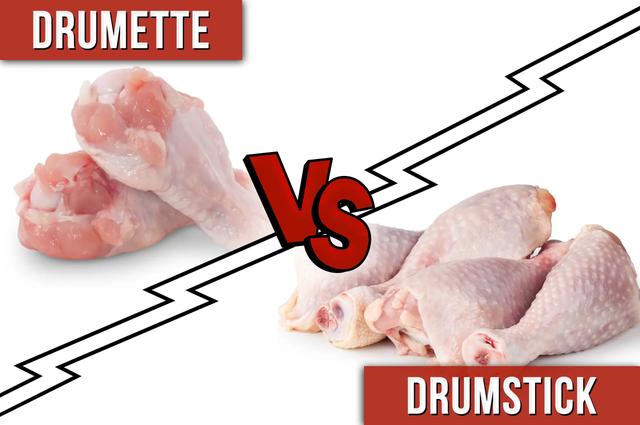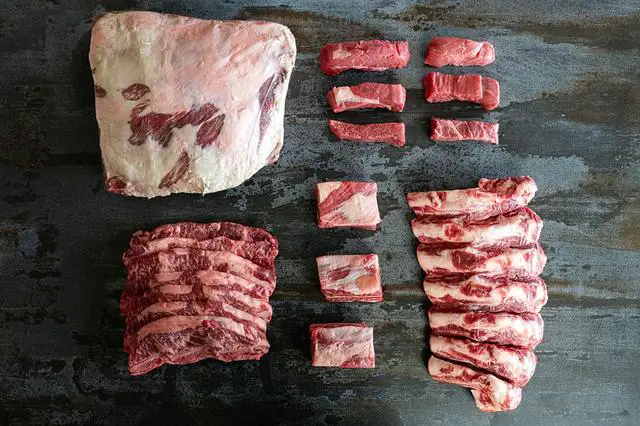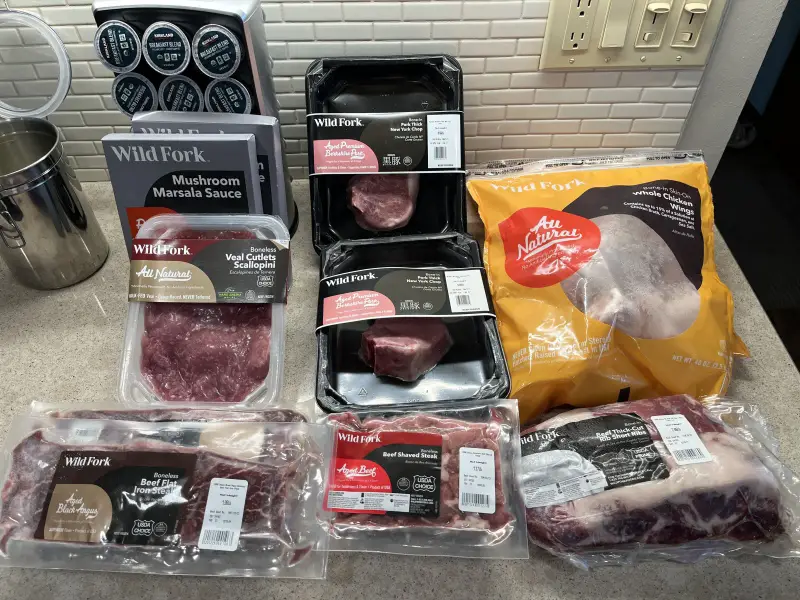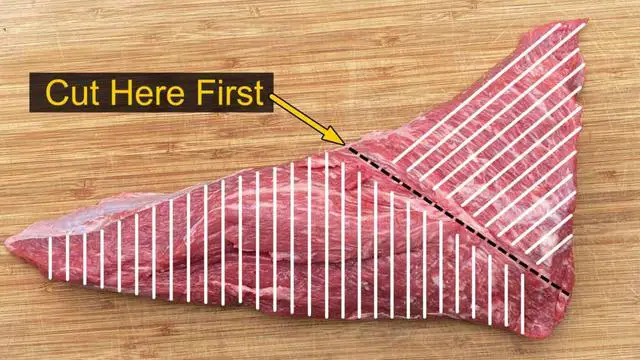
Discover the art of perfectly cutting tri-tip roast with our comprehensive guide. From selecting the right tools to mastering the correct technique, learn how to achieve precise and mouthwatering slices every time. Elevate your culinary skills and impress your guests with expertly cut tri-tip roast that is sure to delight their taste buds.
How to Cut Tri-tip: Slice Against the Grain!

Learning how to cut tri-tip is an important part of cooking this cut of meat. While the straightforward answer is to cut tri-tip against the grain, the trouble with tri-tip is that it has two opposing grain directions. My best advice is still to cut against the grain but to make note of the grain direction prior to cooking the meat. Even if you forget, just remember the grain transitions at the tri-tips “boomerang” inflection point.
The tri-tip is a singular muscle called the tensor fasciae latae muscle. It is a sub-primal cut sourced from the bottom of the sirloin of the beef hindquarter. It’s commonly called the “triangle roast” due to its triangular shape. While the tri-tip is a singular muscle, it’s unique in that it has two different grain directions and should be sliced accordingly.
To help explain this, we can look at both portions of the muscle. The flat end has a grain direction indicated by dotted white lines, while the long cylindrical end tightens up and becomes more horizontal when cooked. The separation point where the grain transitions is roughly where a dotted white line can be seen.
Identifying the Grain Structure of Tri-tip to Slice Against
When it comes to cutting tri-tip, it is crucial to understand its grain structure in order to slice against it. The tri-tip, a sub-primal cut from the bottom of the beef hindquarter’s sirloin, is a singular muscle known as the tensor fasciae latae muscle. What makes tri-tip unique is that it has two opposing grain directions. To properly identify the grain direction, it is recommended to take note of it before cooking the meat or remember that the grain transitions at the “boomerang” inflection point of the tri-tip.
The entire tri-tip muscle consists of a flat, short end and a long, cylindrical end. These two parts not only cook differently but also have muscle fibers running in different directions. The flat end can be identified by dotted white lines indicating its grain direction. On the other hand, the long, cylindrical end tightens up and becomes more horizontal when cooked, making it slightly harder to illustrate its grain direction when laid flat. However, with careful observation and reference to pre-cooked images, one can determine where the grain transitions on this end.
To slice tri-tip against its grain structure successfully, it is advised to separate the two portions after cooking for easier handling and slicing. By referencing a raw image of the tri-tip and examining the direction in which its fibers run, one can easily identify how to slice against them. It is important to note that precision in slicing angle or biasing the knife is not crucial; simply slicing against the grain will make a significant difference in eating experience compared to slicing with it.
How to Cut Tri-tip Against the Grain
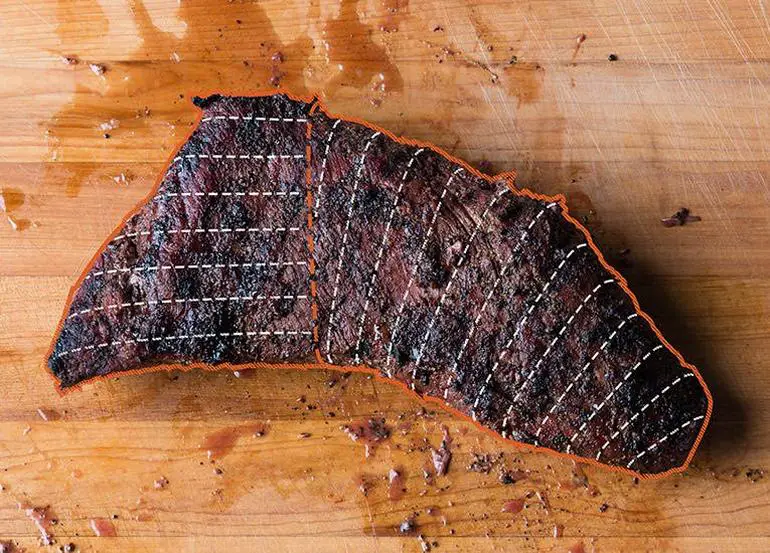
Cutting tri-tip against the grain is essential for a tender and flavorful meat. However, tri-tip can be tricky because it has two opposing grain directions. To ensure you slice against the grain, it’s important to identify the grain direction before cooking the meat.
One way to determine the grain direction is to look for the “boomerang” inflection point on the tri-tip. This is where the grain transitions from one direction to another. Even if you forget to note the grain direction, you can still rely on this inflection point as a guide.
When preparing to cut tri-tip, it’s helpful to separate the flat end from the long, cylindrical end after cooking. This makes it easier to cut each portion without having to turn your knife or the meat. By referencing a picture of the raw tri-tip and observing how the muscle fibers run, you can easily identify and slice against the grain for a more enjoyable eating experience.
Final Thoughts
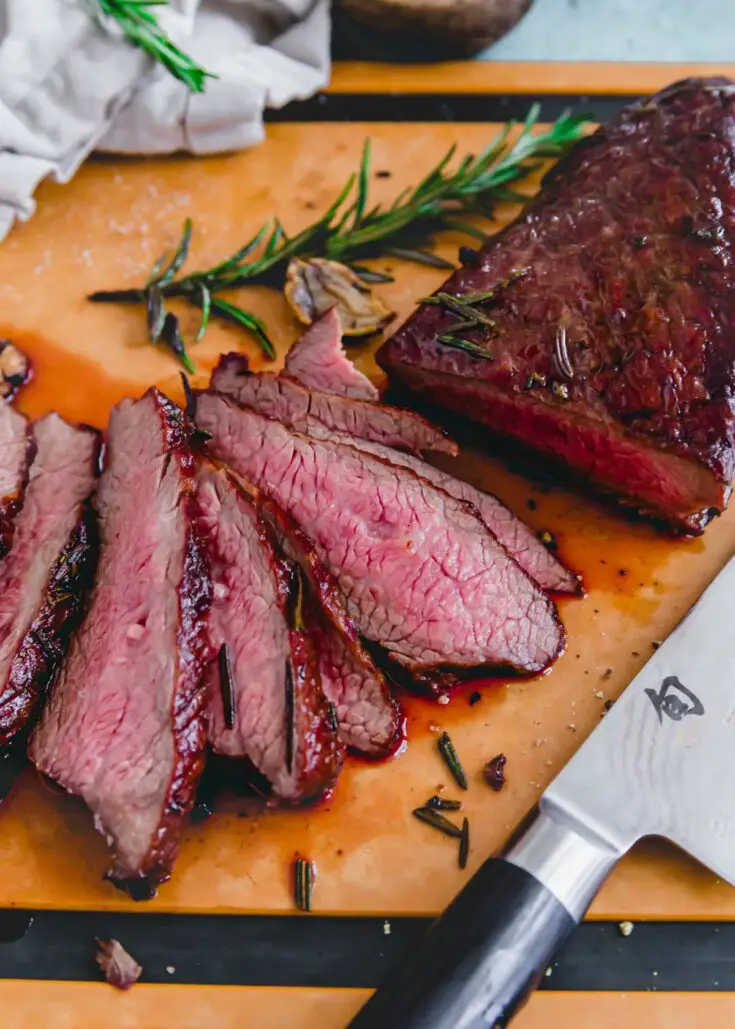
When it comes to cutting tri-tip, it is crucial to slice against the grain. However, the challenge with tri-tip is that it has two opposing grain directions. The best advice is to identify the grain direction before cooking the meat or remember that the grain transitions at the “boomerang” inflection point of the tri-tip. The tri-tip muscle itself is unique as it has two different grain directions and should be sliced accordingly.
To make slicing easier, it is recommended to separate the two portions of the cooked tri-tip before cutting. This allows for more convenient slicing without having to constantly turn your knife or maneuver the meat. By referencing a picture of the raw tri-tip and identifying the direction in which the muscle fibers run, you can easily slice against the grain.
It’s important to note that precision isn’t necessary when slicing tri-tip. You don’t need to measure angles or slice on a bias; simply slicing against the grain will make a significant difference in your eating experience. Remembering these tips and techniques will help you achieve perfectly sliced and tender tri-tip every time you cook it.
In conclusion, cutting a tri-tip roast is a simple process that can be done with a sharp knife and proper technique. By following these steps, you can ensure even slices and maximize the tenderness and flavor of this delicious cut of meat.
Learn More About Grilling
If you want to learn more about grilling, check out these other helpful resources!


